Everything You Need to Know About Car Rust: Prevention, Removal and Repair
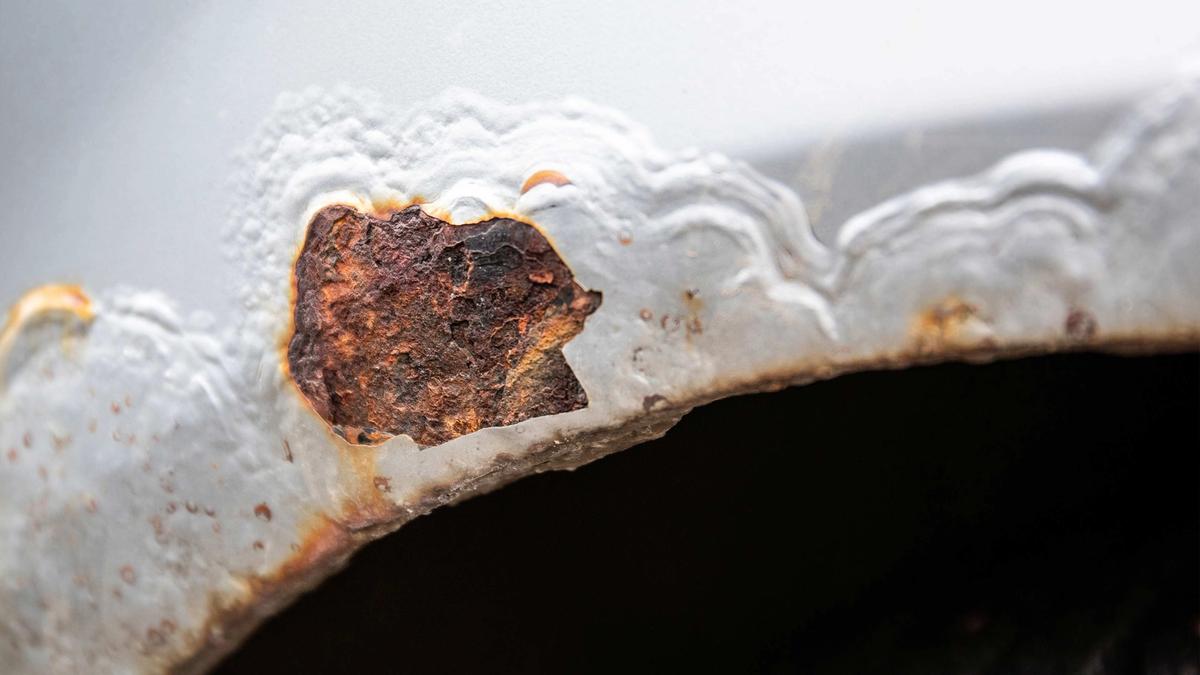
Does your car have rust? It can become both dangerous and expensive if you don't do something about it in time.
In this article, you'll find tips on how to prevent rust from forming, as well as a simple guide on how to remove rust. That way you can ensure your car looks good and is safe for years to come.
To understand how rust can be prevented, it is important to know what rust is and how it forms.
Rust: What is it and how does it form?
Rust is the result of a chemical reaction between iron, oxygen and water, known as oxidation. When the metal in the car is exposed to moisture and oxygen, it forms iron oxide, or rust.
Causes of Rust
Rust on a car mainly occurs due to chemical reactions involving iron, oxygen and water. The vehicle's age, maintenance history and other damage can also affect whether rust occurs or not. The most common causes of rust formation are:
- Moisture and oxygen
- Climate conditions
- Road salt
- Vehicle age and maintenance history
- Paint and body damage
- Choice of materials in the car
Humidity and Oxygen
The fundamental cause of rust is oxidation, where iron (the metal in the car) reacts with oxygen in the presence of water. The more air moisture or water that comes into contact with the metal, the greater the risk of rust.
Climate Conditions
The climate has a significant impact on the speed and extent of rust formation. Humid and salty areas, especially with frequent rainfall or snowmelt in winter, increase the risk of rust.
Road Salt
Salt is used on roads to melt ice and snow in winter, but it also accelerates the rust process by increasing the conductivity of water and thus the access of oxygen to the metal.
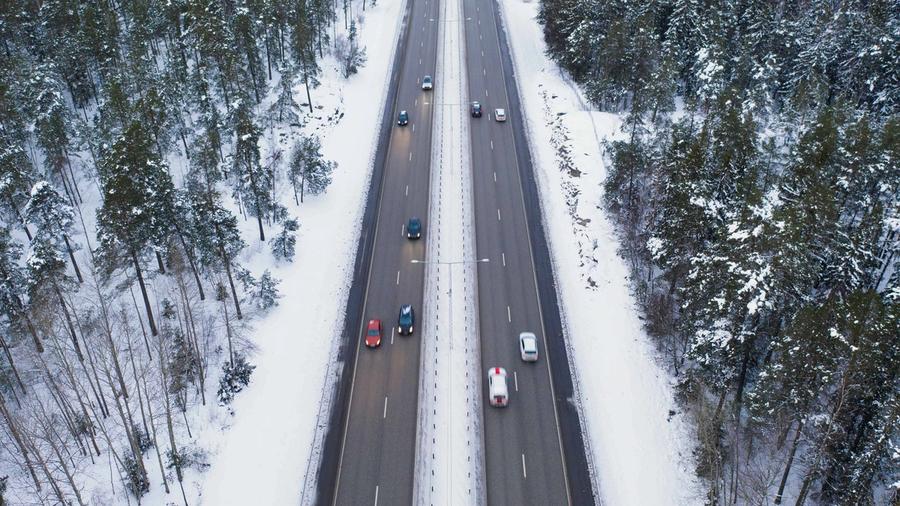
Rust formation is further enhanced by the presence of salt, which means that cars in areas with a lot of road salt in winter are particularly vulnerable.
Vehicle Age and Maintenance History
Older cars and those that have not been well maintained with regular washing, waxing and rust protection are more prone to rust.
Paint and Body Damage
Damage to the paint or body, such as scratches, stone chips or other dents, can break down the car's protective layer and allow water to penetrate to the metal underneath. This can lead to localized rust formation that spreads over time.
Choice of Materials in the Car
Generally, cars made with higher amounts of aluminum and stainless steel have a lower chance of rust formation compared to cars made primarily of regular steel. Older cars are usually made of steel, while modern cars are often made with a combination of different materials.
Rust is caused by various factors. But not all rust is the same. There are several different types of rust, some more serious than others.
Different Types of Rust
The most common types of rust are:
- Surface rust
- Rust film
- Structural rust
- Undercarriage rust
- Internal rust
Surface Rust
Surface rust is the most common type of rust. It forms on the surface of metal, usually due to exposure to moisture, oxygen and salt from the roads. Surface rust can begin as small bubbles under the paint and develop into larger areas if left untreated.
Rust Film
A rust film is formed when small metal particles from brake parts, railroad tracks or other sources get stuck on the surface of the car. These particles oxidise quickly and can cause small, pinpoint rust spots.
Structural Rust
Structural rust is a more serious type rust that affects the structural integrity of the vehicle. It can occur when the rust has penetrated several layers of metal and begins to affect the frame or other supporting structures.
Undercarriage Rust
Undercarriage rust forms on the underside of the vehicle, especially around the chassis, frame and wheel arches. It is often caused by road salt, moisture and dirt.
Internal Rust
Internal rust can occur in hidden areas of the car, such as door channels, inside the hood or in the trunk. It is harder to detect and can be more challenging to remove.
Different types of rust form in different areas. However, some areas are more prone to rust than others.
Common Rust Areas
The most common rust areas in a car are the wheel arches, fenders, door edges, undercarriage, trunk and trunk lid, engine compartment, brakes, wheel hubs and exhaust systems.
These areas are particularly vulnerable because they are exposed to stone chips, road salt and water, which can penetrate and start the rusting process.
Rust can occur at any time and without you knowing it. Therefore, it is important to recognise the signs of rust for early detection.
Signs of Rust Formation
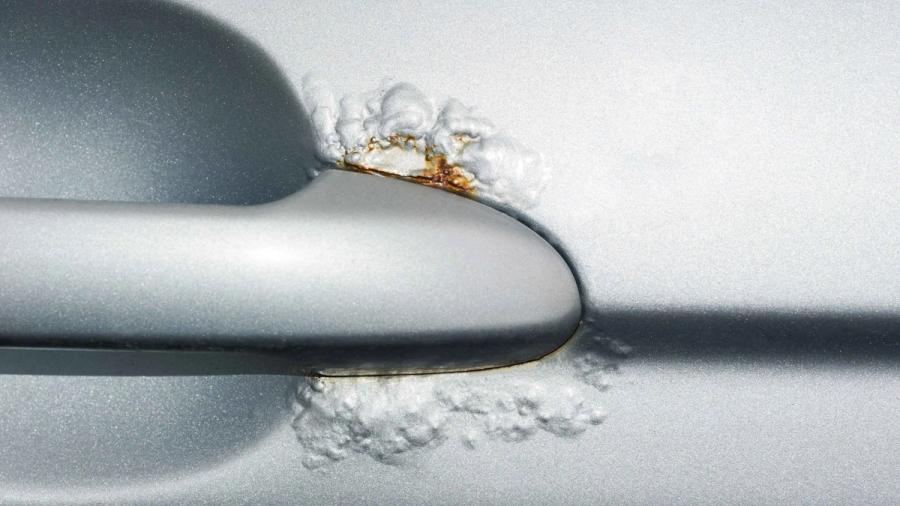
There are several things that can indicate that rust has started to form on your car. It's important to be aware of these signs so that you can act quickly to prevent the rust from spreading and causing more serious damage. The most common signs of rust are:
- Bubbles or bulges in the paint: This is one of the clearest signs of rust. Bubbles or bulges in the paint indicate that rust has formed under the surface. The rust can push up against the paint, creating small swellings that look like bubbles.
- Discolouration or spots on the paint: Rust can also appear as discolouration or dark spots on the car’s surface. These spots can be reddish-brown or orange in colour and are especially visible on lighter paint.
- Rusty or corroded parts: Inspecting the undercarriage may reveal rust on steel or metal components. Here, rust can form as a rough, reddish-brown crust on the metal.
- Creaking or weakened structure: When the rust starts to affect the structure, you may experience creaking or weak areas when moving around the car. This can indicate that the rust has penetrated deep into the structure of the car and weakened the metal.
- Rust stains on the interior: If rust has spread to door edges or other areas visible from the inside, you may see rust stains or discolouration on interior parts.
If you discover rust on your car, it is a good idea to take a closer look and have it removed. Rust is not just a cosmetic issue, and can be dangerous if allowed to develop over time.
Is Rust Dangerous?
Small rust stains in harmless places such as the wheel arch and door frame are mostly just cosmetic damage. However, if the rust has settled and formed in the "wrong" place, it can weaken the car's structure, which in turn reduces its ability to protect you in a collision. Rust on vital parts such as the brakes, drive shafts and undercarriage can also lead to potentially dangerous mechanical failures. Additionally, ignoring rust can lead to high repair costs and reduce the car's resale value.
To keep your car and the road safe, while avoiding high repair costs, maintenance and rust prevention are essential.
Rust Prevention: Avoid Rust Formation
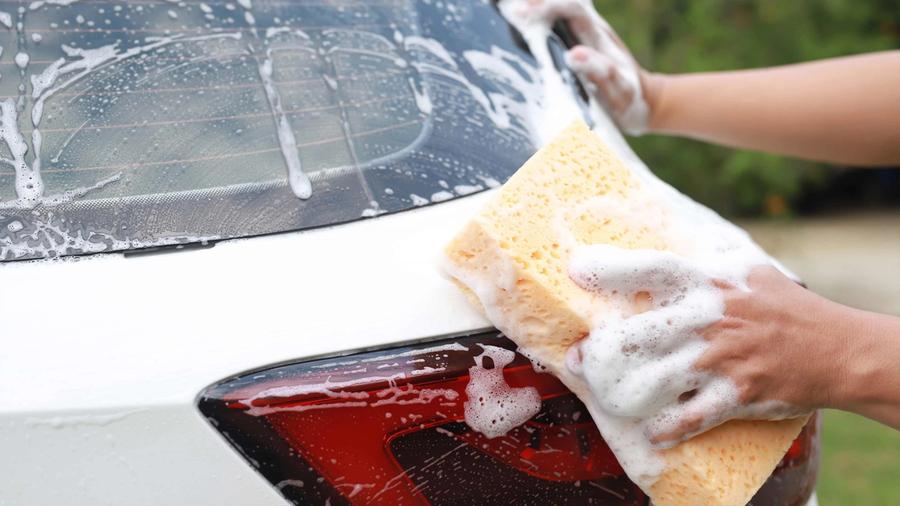
To avoid rust, you can take several preventive measures:
- Regular car care, including washing, waxing and polishing
- Rust protection
- Maintenance
- Undercarriage treatment
- Service
- Covering your car or parking in a garage
- Regular inspections
Regular Car Care, Including Washing, Waxing and Polishing
Keep the car clean by washing it regularly, especially in winter when the roads are salted. Waxing the car can add a protective layer that prevents moisture from penetrating.
Rust Protection
Apply rust protection spray to vulnerable areas such as wheel arches and the underside of the car. Undercarriage treatment is also effective, and some prefer using sheep fat as a natural alternative.
Undercarriage Treatment
Undercarriage treatment once a year, preferably in the fall before winter, is an effective and preventive measure against rust. Lift the car, thoroughly clean the undercarriage with a high-pressure washer and degreasing agent, and let it dry completely. Remove loose rust using scrapers and brushes and apply rust remover to dry. Once the undercarriage is dry, apply the undercarriage treatment evenly with a spray gun or brush, allowing each layer to dry. After the treatment has set, lower the car.
Maintenance
Repair paint damage quickly to prevent rust from gaining a foothold. Keep an eye on particularly vulnerable areas and ensure that drainage holes are open so that water does not accumulate.
Covering the Car or Parking in a Garage
Using a car cover or parking in a garage protects the car from moisture from rain, snow and dew, which are the main causes of body and undercarriage rust. It also reduces exposure to salt and dirt in winter, protects against UV radiation that can fade the paint, minimises the risk of mechanical damage from falling objects and contributes to long-term value retention and vehicle life extension.
Regular Inspections
Regularly checking your car can help you discover rust or early signs of rust formation.
Service
For optimal rust protection, you should follow the manufacturer's recommended service intervals and ensure the car is serviced regularly.
Has rust already started to appear on your car? Then you should get it treated!
Rust Treatment
If your car already has rust, it is important to address it quickly to prevent it from spreading.
Can I Remove the Rust Myself?
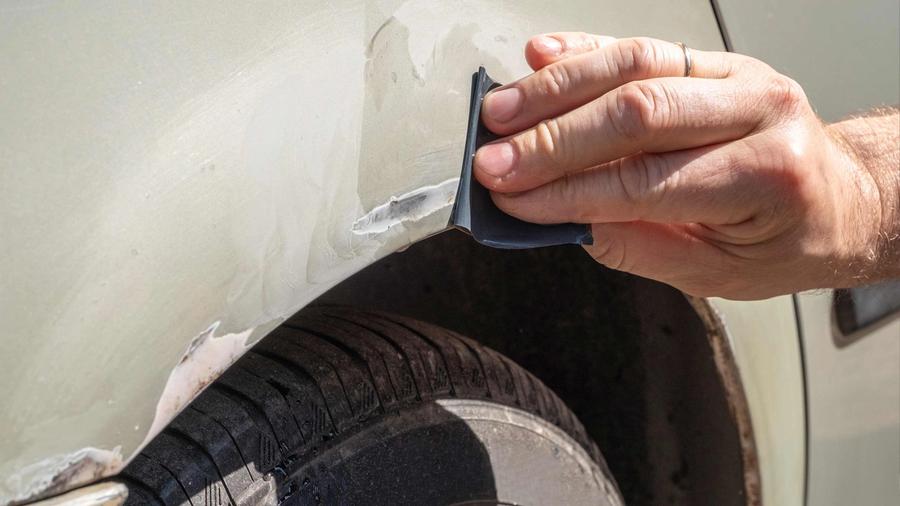
You can treat minor rust damage yourself. To remove rust from your car, you will need:
- Sandpaper or wire brush: To remove rust from the metal.
- Rust converter: A chemical product that converts rust into a stable surface that can be painted.
- Primer: A primer suitable for metal.
- Paint: Matching car color to protect the metal after treatment.
- Masking tape and newspaper: To protect areas around the rust.
How to Remove Rust from Your Car
Step 1: Preparation
1. Clean the area: Wash and dry the area thoroughly to remove dirt and grime. It is important to start with a clean surface.
2. Protect surrounding areas: Use masking tape and newspaper to cover parts of the vehicle that are not being treated.
Step 2: Remove the rust
1. Use sandpaper or wire brush: Start by removing the rust. Rub gently over the rust area until you have removed all visible rust. Be careful not to damage the unaffected metal around the rust area.
2. Clean the surface: Remove dust and rust particles by wiping the surface with a clean, dry cloth.
Step 3: Apply rust converter
1. Apply rust converter: Use a brush or applicator to apply the rust converter to the rust area. Follow the manufacturer's instructions. The rust converter will react with the rust and convert it into a stable surface.
2. Let it dry: Allow the rust converter to dry completely according to the manufacturer's instructions. This usually takes a few hours depending on the product and temperature conditions.
Step 4: Apply primer
1. Apply primer: When the rust converter has completely dried, apply a thin layer of primer to the treated area. The primer prepares the metal for painting.
2. Let the primer dry: Follow the instructions on the can to let the primer dry before proceeding to the next step.
Step 5: Painting
1. When the primer has dried: Apply several thin layers of paint to the treated area, matching the colour of the rest of the car. Make sure to let each layer dry completely between applications.
2. Let the paint dry: Allow the last application of paint to dry completely according to the instructions on the can. This will ensure that the treated area is fully protected against further rust formation.
Step 6: Finishing
1. Remove masking tape and newspaper: When the paint has completely dried, carefully remove the masking tape and newspaper from the protected areas around the treated area.
2. Inspection and finishing: Carefully inspect the treated area to ensure that the rust is completely removed and the paint is even. Repeat the process if necessary to achieve the desired result.
Should I Remove the Rust Myself?
If you feel comfortable using the necessary equipment and following a thorough step-by-step guide, you can easily treat minor rust stains and surface rust that has not penetrated deep into the metal.
However, if the rust is more extensive or located on critical parts such as the brakes or undercarriage, it is best to seek professional help.
When to Seek Professional Help
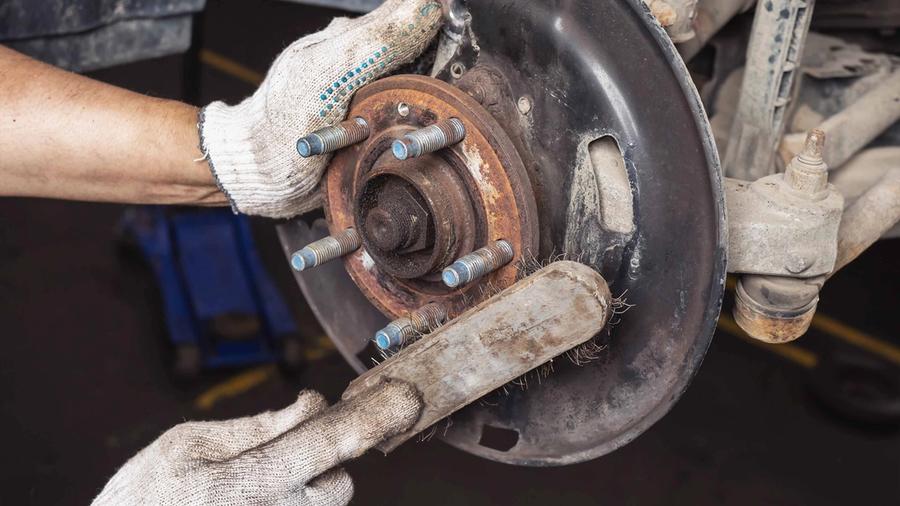
For more extensive and structural rust damage, especially rust that has developed to a level where it affects the vehicle's load-bearing or supporting structures, such as the frame, body or other vital parts critical to the vehicle's integrity and safety, it is important to have the vehicle assessed and repaired by a professional. This ensures that the rust is properly removed and that the car's structure remains intact. Rust welding may also be necessary in severe cases. Find your nearest inspection station here. (https://www.vikingredning.no/kontroll/stasjoner)
Prevent Rust from Coming Back
Even after thorough rust removal, it is important to maintain the car to prevent new rust formation. Protect the car with anti-rust primers, paint and regular use of rust control products, and wash and inspect it regularly.
Read more: Why You Should Polish Your Car in the Fall (https://www.vikingredning.no/artikler/hvor-ofte-nar-polere-bil)
Frequently Asked Questions:
How does climate affect rust formation on the car?
The climate has a significant impact on rust formation. Humid climates with a lot of rain or snow increase the risk of rust, especially when road salt is used in winter to melt ice. The salt accelerates the oxidation process, leading to faster rust formation. In areas with high humidity and salt, such as coastal regions or places with long winters, it is therefore especially important to take preventive measures against rust.
How can I check for rust when buying a used car?
When buying a used car, you should inspect the car carefully for rust. Look under the car and along the wheel arches, door edges, and under the door frames. Use a flashlight to illuminate dark areas. You can also use a magnet to check if a lot of filler has used instead of metal, which may indicate previous rust repairs. It is also a good idea to have a mechanic inspect the car for hidden rust damage.
What are the costs associated with rust treatment?
The cost of rust treatment varies depending on the extent of the rust and the method used. Minor rust repairs that can be done at home may cost a few hundred kroner for sandpaper, rust converter and paint. Professional repairs can cost several thousand kroner, especially if extensive work is required, such as cutting and welding new metal plates. Undercarriage treatment and rust protection can cost between 3,000 and 7,000 kroner, depending on the size of the car and the treatment method.
How does rust affect car warranties and insurance?
Rust can affect your car's warranty and insurance. Many car warranties cover rust damage for a limited period, usually around 5-10 years, depending on the manufacturer. It is important to read the warranty terms carefully to understand what is covered. When it comes to insurance, standard car insurance policies do not cover rust damage, as it is considered a result of wear and tear and poor maintenance. However, it may be possible to obtain coverage for rust damage through special insurance policies or add-on covers.
Are there any innovative technologies or products for rust protection?
Yes, there are several innovative technologies and products for rust protection. Electrolytic rust protection, also known as cathodic protection, uses electric current to prevent oxidation. Advanced coatings, such as ceramic coatings, provide extra protection against rust by creating a hard, water-resistant surface. Nanotechnology-based products can penetrate microscopic pores in the paint and prevent water and oxygen from reaching the metal underneath. These technologies and products can offer significantly better protection against rust compared to traditional methods.
Can rust on a car affect fuel efficiency?
Rust can indirectly affect fuel efficiency. Although rust itself does not increase fuel consumption, it can weaken the car's aerodynamics if the rust formation leads to unevenness in the car body. Additionally, rust can add extra weight if rusty parts are not removed or replaced. Mechanical problems resulting from rust on vital parts can also affect the car's performance and thus fuel efficiency.
How do you handle rust on electric vehicles?
Rust protection and treatment on electric vehicles requires special considerations. Although many electric vehicles have parts made of aluminum and other non-ferrous materials that are less prone to rust, they still have steel parts that can rust. It is important to use rust protection products that are compatible with electrical components and to avoid moisture in areas where the batteries and electronics are located. Regular inspection and maintenance are just as important for electric vehicles as it is for fossil fuel vehicles to ensure longevity and safety.
Summary
Car rust occurs when iron reacts with oxygen and moisture, which can lead to compromised safety and mechanical issues. It is important to pay attention to signs of rust, such as bubbles in the paint or discolouration, as these may indicate early rust damage. Minor rust damage can be removed by using a detailed step-by-step guide included in the article, while major damage should be left to professionals to ensure proper treatment and maintain the long-term structural integrity of the vehicle. Preventive measures, such as regular car care, including washing, waxing and rust protection, are an important part of preventing rust formation, ensuring that the vehicle remains in good condition over time.
- Car rust occurs when iron reacts with oxygen and moisture, weakening the car's structural integrity over time.
- Signs of rust include bubbles in the paint, discolouration or perforation of the metal.
- Minor rust damage can be repaired using a step-by-step guide, as described in the article.
- Major rust damage should be handled by professionals to ensure proper treatment and prevent further damage.
- Preventive maintenance, such as regular washing, waxing and applying rust protection, is essential to prevent rust formation and maintain the condition of the vehicle.
 Jump start
Jump start Wrong fuel
Wrong fuel Out of fuel
Out of fuel Vehicle lockout
Vehicle lockout Battery replacement
Battery replacement Tire fitting
Tire fitting